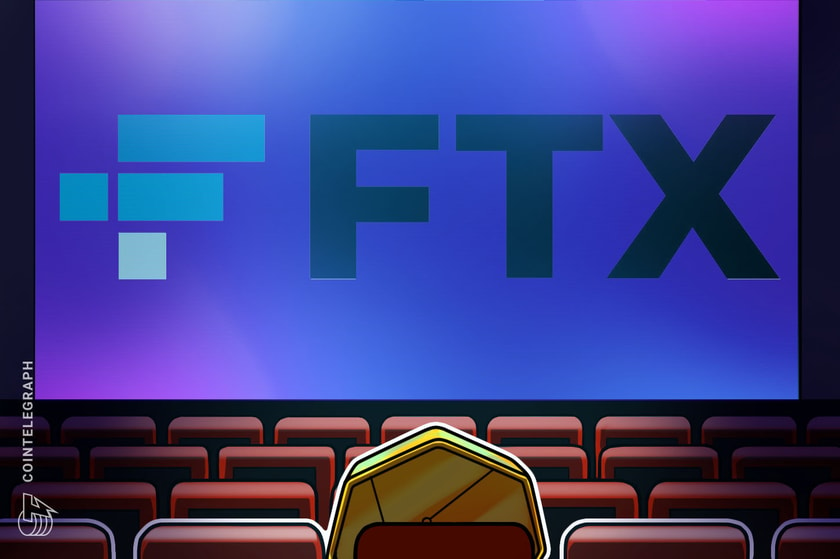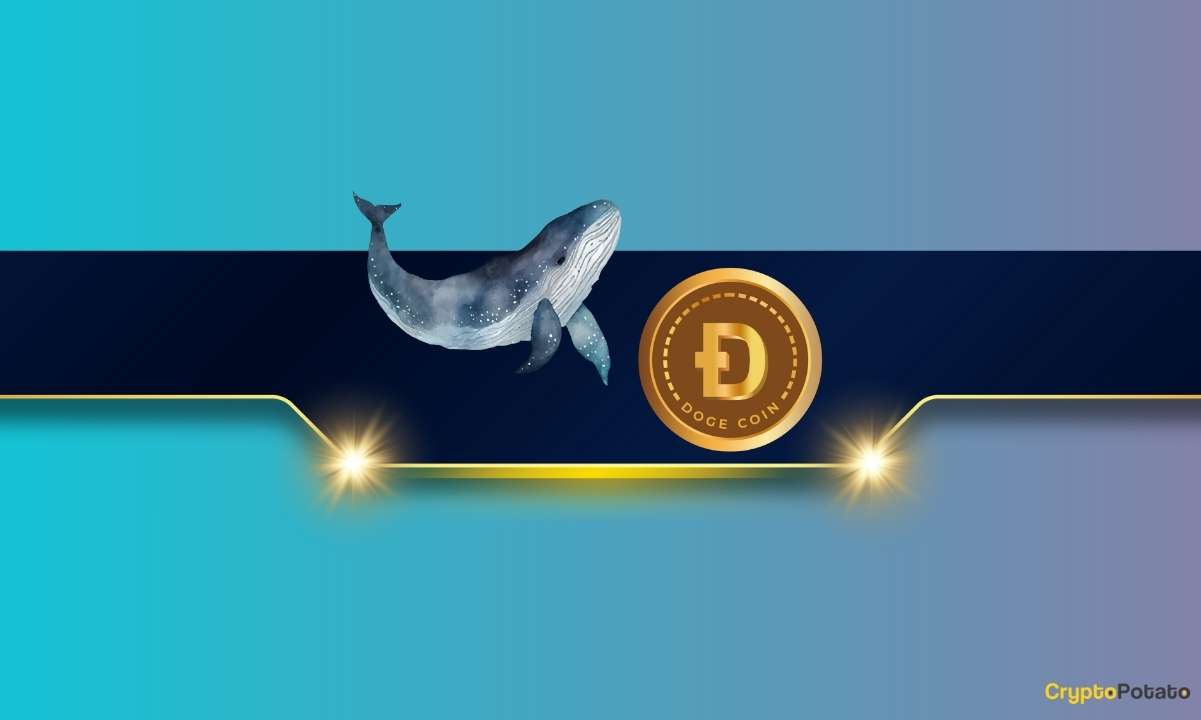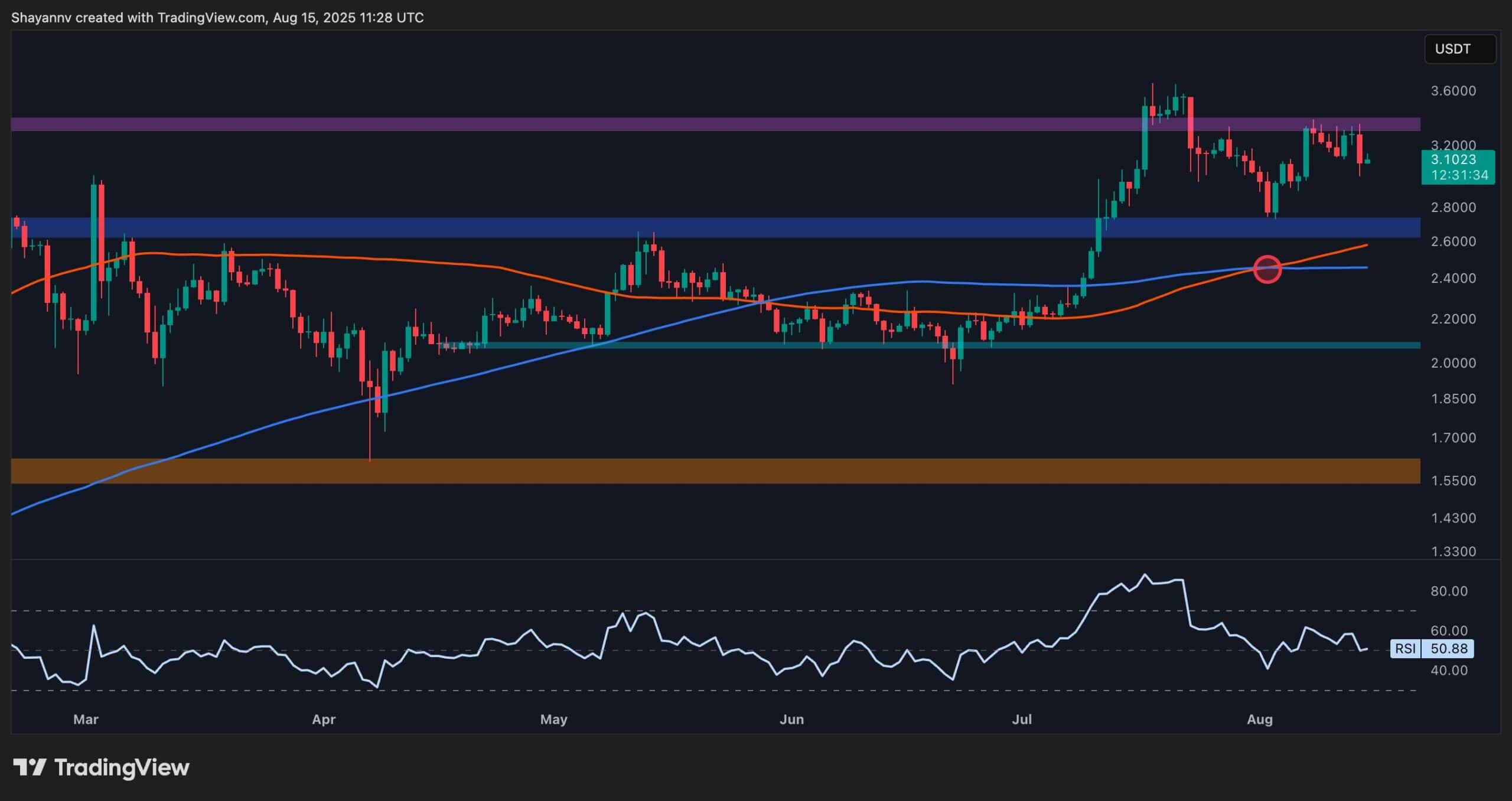Cryptocurrency
FTX’s $3.4B crypto liquidation: What it means for crypto markets

The FTX bankruptcy lawsuit reached a key juncture in the second week of September after the United States Bankruptcy Court for the District of Delaware approved the sale of $3.4 billion worth of crypto assets.
The court also approved $1.3 billion in brokerage and government-recovered assets as part of the liquidation process, with $2.6 billion in cash bringing the total tally to $7.1 billion in liquid assets.
Among the different cryptocurrencies set for liquidation, Solana (SOL) tops the pile with a value of $1.16 billion, and Bitcoin (BTC) is the second-largest asset held, valued at $560 million.

Other assets to be liquidated include $192 million in Ether (ETH), $137 million in Aptos (APT), $120 million in Tether (USDT), $119 million in XRP (XRP), $49 million in Biconomy Exchange Token (BIT), $46 million in Stargate Finance (STG), $41 million in Wrapped Bitcoin (WBTC) and $37 million in Wrapped Ethereum (WETH).
Bitcoin, Ether and insider-affiliated tokens can only be sold after giving a 10 days advance notice to U.S. trustees appointed by the Department of Justice. The court also permitted hedging options for these assets.
The allowance for hedging is significant because FTX can use various financial instruments, such as futures, options and perpetual swaps to offset the losses.
The ruling drew industry-wide attention due to the significant amount of crypto assets approved for sale, with many questioning the potential impact on the crypto market.
Magazine: Are DAOs overhyped and unworkable? Lessons from the front lines
Joshua Garcia, partner at Web3-focused legal firm Ketsal, told Cointelegraph that determining whether the liquidation was the right decision is challenging. He said that bankruptcy courts have to focus on what is good for creditors, and creditors may care more about the recovery of funds rather than a potential slump in the price of the assets being liquidated.
“Whether or not this decision impacts the token price is perhaps not the court’s primary concern. The potential or imagined market impact may mean nothing to a judge or creditors committee if it doesn’t make creditors whole, at least in the eyes of the court. The concern here is millions of users suffered substantial losses due to FTX’s actions. Making victims as whole as possible is the top priority.”
The discovery of billions of dollars of liquid assets also relieved many creditors in the case.
Blake Harris, an asset protection attorney, believes unearthing liquid assets can be a game-changer in the FTX bankruptcy case. He told Cointelegraph that the newfound liquid assets “could offer more flexibility in asset management, allowing for a strategic approach that balances immediate legal requirements with broader market implications,” adding that “the discovery of such assets could provide some relief in terms of meeting immediate financial obligations, but it’s also essential to consider how these assets will be managed moving forward to prevent similar situations in the future.”
Market analysts predicted that Solana and Aptos prices have the highest chance of facing price volatility after liquidation based on each token’s daily trading volume.
How much of an impact will FTX’s liquidation have on the market?#SOL (81%) and #APT (74%) will have the most impact when you look at the daily trading volume of each token#BTC, #XRP, and #BNB liquidations will have very little impact on the market as each are 1% or less of… pic.twitter.com/XXIoZbKfBm
— Velvet.Capital (@Velvet_Capital) September 17, 2023
FTX liquidation won’t risk a crypto market cascade
The bankruptcy court has taken measures to ensure that the liquidation of FTX assets won’t become a burden for the crypto market.
The court order permits FTX to sell digital assets through an investment adviser in weekly batches in accordance with pre-established rules. Galaxy Digital has been entrusted with liquidating the assets and maximizing returns for FTX’s creditors while ensuring market stability.
The court also permitted FTX “to utilize staking options available through their qualified custodians using their respective private validators if the Debtors determine in the reasonable exercise of their business judgment that such activities are in the best interests of their estates.”
In the first week, there will be a $50 million cap on the sale of assets, followed by a $100 million cap in the succeeding weeks. The cap can be increased up to $200 million per week with the previous written consent of the creditors’ committee and ad hoc committee after court approval.
Anthony Panebianco, a commercial business litigator, told Cointelegraph that legally, a court may permit a debtor to liquidate its assets “outside the normal scope of business” in order to maximize the value from the sale to repay creditors, adding:
“The interesting part is that the court took an additional step to look at the general marketplace for the assets it is granting liquidation of. That is, the court is looking at protecting both creditors and non-creditors of FTX by the manner in which it has ordered the liquidation process.”
He also highlighted the different liquidation strategies for BTC and ETH. He said the “court-approved hedging arrangements for Bitcoin and Ether are subject to certain investment guidelines,” adding that “the court did not include Solana in these eligible assets for hedging arrangements, likely because of FTX’s large position in Solana. All three appear to be eligible for staking arrangements, again with oversight.”
Among all crypto assets held by FTX slated for liquidation, Solana became a major point of discussion owing to the $1.1 billion of the asset on the bankrupt crypto exchange’s balance sheet. According to market analysts, people considering a short position should be wary of the unlock period of the tokens held by FTX, with a complete unlock in 2028.
Looking at FTX’s SOL staking unlock schedule, a significant chunk of these tokens will slowly make their way to the market via linear vesting or scheduled unlocks until 2028, with the largest unlock scheduled for March 2025. Most of the SOL is locked in staking contracts.
Recent: Google paves way for AI-produced content with new policy
The linear vesting program offers a simple mechanism to gradually release a token balance over certain periods.
Currently, only 24% of the total $1.16 billion SOL tokens have been unlocked. Apart from Solana, Aptos tokens are also 100% locked and will be unlocked in phases over the next few years.

In its own analysis, Coinbase crypto exchange said that the scheduled and phased liquidation will keep the market stable, noting the strict controls in place for selling certain “insider-affiliated” tokens and a major part of FTX’s SOL holdings locked up until around 2025 due to the token’s vesting schedule.
While many experts state that markets are more or less safe amid the FTX liquidation, the exchange’s saga is far from over, with former CEO Sam Bankman-Fried’s legal team sparring with prosecutors for special conditions ahead of the trial.
Moreover, the exchange’s alleged illegal behavior has dealt a significant blow to public trust in the crypto ecosystem.
Cryptocurrency
Ethereum Foundation, Whales, and Hackers: What’s Driving the ETH Sell-Off?

TL;DR
- Whales, hackers, and the Ethereum Foundation wallets moved over $500M in ETH through large sales and withdrawals.
- Ethereum transfers rose to 4.6M ETH, nearing the monthly high of 5.2M recorded in July.
- Staking inflows hit 247,900 ETH, the highest in a month, locking more supply from trading.
Large Withdrawals and Whale Activity
Ethereum (ETH) has seen heavy movement from major wallets over the past few days. On-chain data from Lookonchain shows a newly created wallet pulled 17,591 ETH, worth $81.62 million, from Kraken in just two hours.
Over three days, two new wallets withdrew a combined 71,025 ETH, valued at $330 million, from the exchange.
One of these wallets, address 0x2A92, has withdrawn 53,434 ETH, worth $242.34 million, in two days. This includes a recent purchase of 30,069 ETH, valued at $138.46 million, during a market drop.
Major ETH Holders Offload Millions Amid Price Rally
In contrast, several separate entities have been disposing of some ETH holdings. A wallet tied to a hacker address 0x17E0 sold 4,958 ETH for $22.13 million at $4,463, securing a profit of $9.75 million. Earlier this year, the same address sold 12,282 ETH at $1,932 and later bought back part of the amount at higher prices.
A different whale sold 20,600 ETH for $96.55 million over the past two days, generating a profit of more than $26 million after holding the position for nine months.
Meanwhile, an Ethereum Foundation-linked wallet, 0xF39d, sold 6,194 ETH worth $28.36 million in the last three days at an average price of $4,578.
Recent sales from the same wallet included an additional 1,100 ETH and 1,695 ETH for over $12.7 million combined.
The #EthereumFoundation-linked wallet(0xF39d) sold another 1,300 $ETH($5.87M) at $4,518 ~11 hours ago.
Over the past 3 days, this wallet has sold a total of 6,194 $ETH($28.36M) at an average price of $4,578.https://t.co/4hfCWymHVG pic.twitter.com/ErUyEY8SJy
— Lookonchain (@lookonchain) August 15, 2025
Network Activity on the Rise
CryptoQuant data shows Ethereum’s total tokens transferred have been climbing since August 9. After ranging between 1 million and 3 million ETH through late July and early August, transfers have risen to 4.6 million ETH, approaching the monthly high of 5.2 million recorded in mid-July. This increase has occurred alongside a price rally from about $3,400 to $4,600.
Interestingly, staking inflows generally stayed between 20,000 and 80,000 ETH per day over the past month. On August 14, inflows jumped to 247,900 ETH, the highest in the period.
At the time, ETH was trading near $4,600. Large staking deposits reduce the amount of ETH available for immediate trading, as staked coins are locked for a set period.
In the meantime, ETH trades at $4,647 with a 24-hour volume of $68.25 billion, down 2% on the day but up 19% over the week.
Binance Free $600 (CryptoPotato Exclusive): Use this link to register a new account and receive $600 exclusive welcome offer on Binance (full details).
LIMITED OFFER for CryptoPotato readers at Bybit: Use this link to register and open a $500 FREE position on any coin!
Cryptocurrency
Massive DOGE Whale Activity Hints at $1 Breakout

TL;DR
- Whales bought two billion DOGE this week, lifting their combined holdings to 27.6 billion coins.
- A single 900M DOGE transfer worth $208M to Binance drew attention to large exchange movements.
- DOGE broke key resistance, with momentum building for a possible push toward the $1 price mark.
Price and Market Moves
Dogecoin (DOGE) traded at $0.23 at press time, slipping 4% over the past day but still showing a 2% gain for the week. Daily turnover came in at about $6.18 billion.
Meanwhile, the broader crypto market saw over $1 billion in liquidations. Hotter-than-expected US Producer Price Index data pushed traders to scale back expectations of a near-term Federal Reserve rate cut. DOGE had roughly 290,500 coins liquidated during the sell-off.
On the two-week chart, analyst Trader Tardigrade notes that DOGE has cleared a downward-sloping resistance line after completing what appears to be a “wave V” in an Elliott Wave sequence. Similar setups in the past, where prolonged declines stayed within falling channels before breaking higher, have been followed by sharp rallies.
$Doge/2-week#Dogecoin is gaining strong momentum to surge above $1 pic.twitter.com/TuSEKr19nv
— Trader Tardigrade (@TATrader_Alan) August 15, 2025
Momentum gauges are also turning up. The Stochastic RSI, which had dropped into oversold territory, is now heading higher. Previous reversals from this zone have coincided with sustained upward moves. The current formation points to a possible run that could carry DOGE past the $1 mark.
Heavy Whale Buying and Large Transfers
As reported by CryptoPotato, blockchain data shows large investors have added two billion DOGE in the past week, spending just under $500 million. That brings their holdings to about 27.6 billion coins, or 18% of the supply. The buying streak has prompted speculation within the community.
Recently, Whale Alert flagged a 900 million DOGE transfer worth about $208 million into Binance. The tracking indicates that it originated from a wallet connected to the exchange, likely as an internal activity. The address involved holds 2.88 billion DOGE, one of the largest balances on the network.
Ali Martinez also reports that transactions above $1 million reached a one-month high, with activity building since early August and peaking as DOGE traded at $0.25.
Whales are back! Dogecoin $DOGE activity at a 1-month high. pic.twitter.com/C83Pv68mCt
— Ali (@ali_charts) August 14, 2025
Sentiment Building
Analyst Gordon described the current setup as “a nice bit of consolidation” before a potential breakout, adding,
“This will be one of the first coins normies FLOCK to & the pump will be MASSIVE.”
With whale accumulation rising, high-value transfers increasing, and a bullish technical pattern in play, DOGE is positioned for a potential push toward $1 if momentum holds.
Binance Free $600 (CryptoPotato Exclusive): Use this link to register a new account and receive $600 exclusive welcome offer on Binance (full details).
LIMITED OFFER for CryptoPotato readers at Bybit: Use this link to register and open a $500 FREE position on any coin!
Cryptocurrency
Ripple Price Analysis: XRP at Risk as Key Support Levels Could Trigger Sharp Drop

XRP has recently entered a consolidation phase after a strong rally earlier this summer, with the price action now hovering around key resistance levels on both its USDT and BTC pairs. Yet, while momentum has slowed, the charts still indicate a generally bullish structure, with multiple key support levels remaining firmly in place.
Technical Analysis
By ShayanMarkets
The USDT Pair
On the XRP/USDT daily chart, the price is currently trading near the $3.10 mark, facing a strong resistance zone around $3.40. This follows a breakout above the $2.70 range in July, which has now flipped into a support area.
Both the 100-day and 200-day moving averages are also trending upward and recently formed a bullish crossover around $2.45, reinforcing the medium-term bullish sentiment. If the $3.40 resistance breaks, a push toward the critical $4.00 range becomes likely.
However, the RSI hovering near the neutral 50 level suggests a lack of strong momentum for now, meaning a short-term pullback into the $2.80 support zone is still possible.
This zone will be key for maintaining the bullish structure. Losing it could open the door for a deeper correction toward the 200-day moving average located around the $2.40 mark. Yet, as long as the price stays above the moving averages, the broader trend remains bullish.
The BTC Pair
Looking at the XRP/BTC chart, the pair has recently pulled back after hitting the 3,000 SAT resistance, with the price currently around 2,600 SAT.
This follows a clean breakout above the long-term descending channel and a successful retest of its upper boundary, which coincided with the 200-day moving average and the 2,400 SAT support zone. This confluence remains a key bullish technical factor, as holding above it could attract renewed buying pressure.
That said, RSI levels around 48 show that momentum has cooled after the sharp July rally, meaning XRP may continue ranging between 2,400 SAT and 3,000 SAT in the near term. A decisive close above 3,000 SAT would likely open the path to the 3,400 SAT zone, while losing 2,400 SAT could shift the bias back toward 2,000 SAT support. For now, the structure still favors the bulls as long as higher lows remain intact.
Binance Free $600 (CryptoPotato Exclusive): Use this link to register a new account and receive $600 exclusive welcome offer on Binance (full details).
LIMITED OFFER for CryptoPotato readers at Bybit: Use this link to register and open a $500 FREE position on any coin!
Disclaimer: Information found on CryptoPotato is those of writers quoted. It does not represent the opinions of CryptoPotato on whether to buy, sell, or hold any investments. You are advised to conduct your own research before making any investment decisions. Use provided information at your own risk. See Disclaimer for more information.
Cryptocurrency charts by TradingView.

 Forex3 years ago
Forex3 years agoForex Today: the dollar is gaining strength amid gloomy sentiment at the start of the Fed’s week

 Forex3 years ago
Forex3 years agoUnbiased review of Pocket Option broker

 Forex3 years ago
Forex3 years agoDollar to pound sterling exchange rate today: Pound plummeted to its lowest since 1985

 Forex3 years ago
Forex3 years agoHow is the Australian dollar doing today?

 Cryptocurrency3 years ago
Cryptocurrency3 years agoWhat happened in the crypto market – current events today

 World3 years ago
World3 years agoWhy are modern video games an art form?

 Commodities3 years ago
Commodities3 years agoCopper continues to fall in price on expectations of lower demand in China

 Economy3 years ago
Economy3 years agoCrude oil tankers double in price due to EU anti-Russian sanctions





















